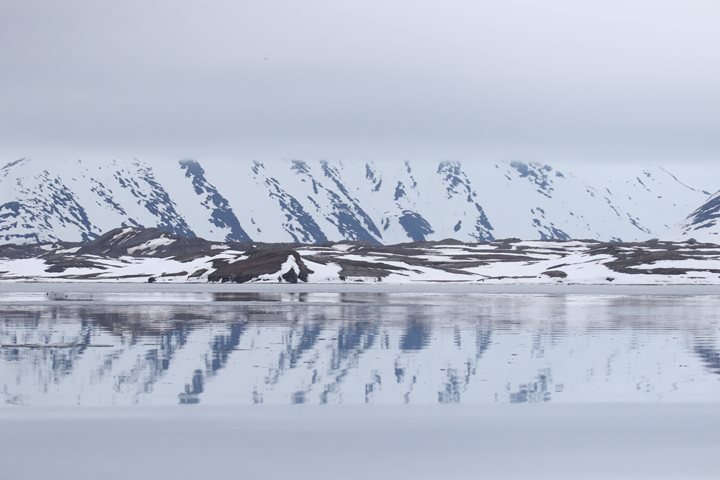Situated offshore of Norway’s north-central coast, the Lofoten Archipelago lies at the crux of the cold Norway Current and ‘warm’ tail end of the Gulf Stream. Combining different water sources and mixed by the tempestuous North Atlantic and Arctic Oceans, the waters are full of oxygen and nutrients. After a winter accumulating nutrients, these waters are in need of only one more factor to explode with productivity and marine life: sunlight. Because the Lofoten Islands lie above the Arctic Circle, the summer bloom is short but intense in this region, making it a prime spot for marine life, diving, and fishing.
With the help of a well-trained team of buddy divers and an underwater high definition camera, I have been exploring Norway’s fjords and islands from a colder and wetter vantage point. This morning Rockandroll Max and I dove a reef complex on the southwest side of Vaeroya at the southern end of the Lofoten Archipelago. Open to influx from the North Atlantic and lacking shelter from any other landmass, this hotspot picks up the full potential of these productive waters. While guests were watching puffins and razorbills on Zodiacs topside, Max and I plied through the kelp forest looking for the next interesting marine creature to film. Although most of the big fish were quite wary of our presence, smaller and more obscure animals didn’t mind our bright lights and inquisitive looks. Skeleton shrimp stood on fronds of kelp swaying back and forth like head banging concertgoers. Nearby, ghostly Polycera sea slugs sniffed out their next meal amidst the branching algae. The highlight of our dive was found on a mass of tender red algae. A train of sea hares was found mating and laying coils of eggs onto their favorite food item, red algae. If ever a squishy invertebrate could be called cute, it would be one of these rabbit-eared nudibranchs.
Following a visit to picturesque Reina where local residents were removing their dried cod from drying racks, we headed east and then north to a very narrow place of legend, Trollfjord. Yet, instead of picking cliff-dwelling flowers from the bow of National Geographic Explorer, the dive team/galley and I went for another dive along the very steep sides of the glacial-carved valley. Although we’re in the land of 24-hour daylight, at this late hour the incident angle of light is too shallow for light to penetrate, making for twilight diving conditions. Thousands of comb jellies moved like interstellar spacecraft through the dark water as we descended to the unknown, capturing footage and images for our fellow travelers. After a quick edit, the warm, lively lounge will be a slightly more comfortable place for our guests to experience these seldom seen and oft-misunderstood waters.









